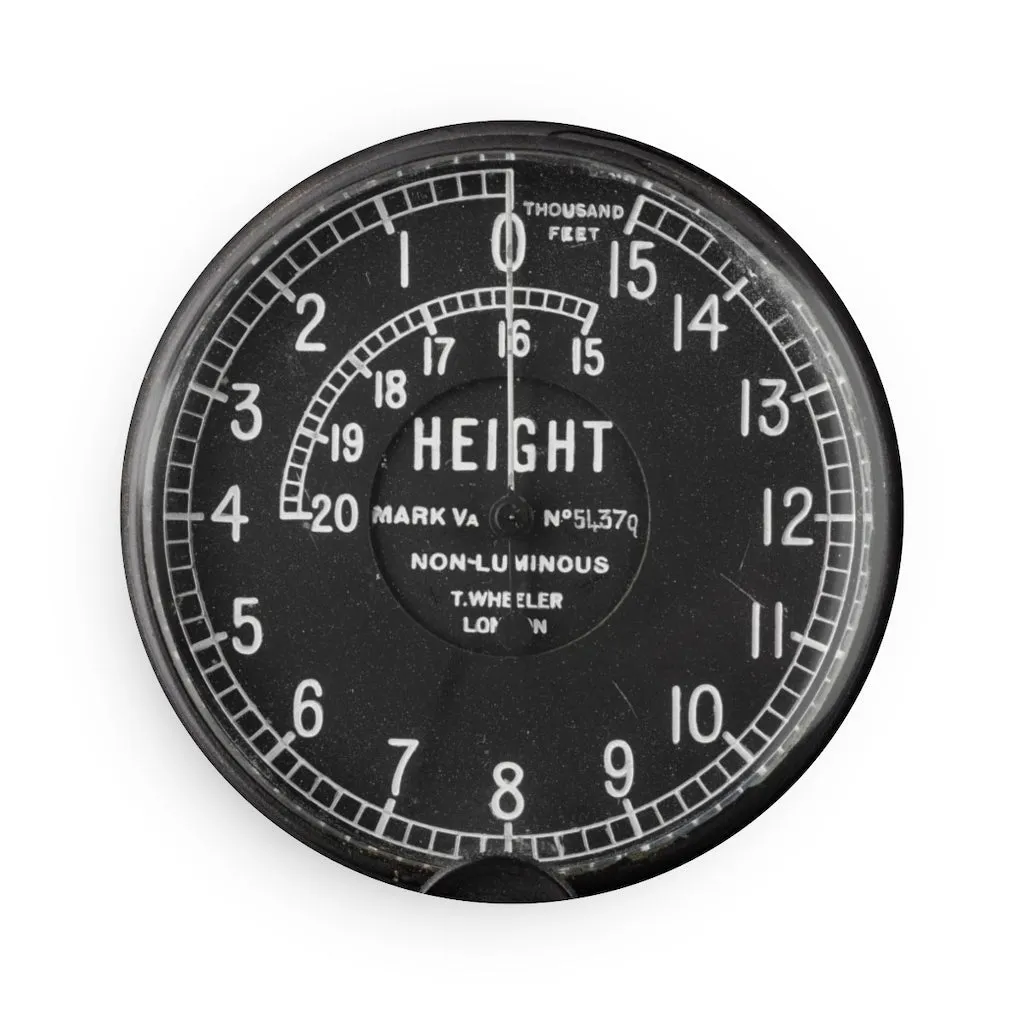During World War I, aircraft were equipped with basic altitude indicators, typically mechanical barometric altimeters. These devices measured altitude by detecting changes in atmospheric pressure as the aircraft climbed or descended. The altimeter consisted of a pressure-sensitive aneroid capsule linked to a needle that moved across a calibrated dial to display the altitude, usually in feet or metres.
WWI altimeters were relatively simple and less accurate than modern versions, with limited precision at higher altitudes due to the reduced sensitivity of the pressure systems. Nonetheless, they were vital for navigation, especially as aircraft began operating at increasingly higher altitudes for reconnaissance, bombing, or escaping enemy fighters. Since most WWI cockpits were open to the elements, these instruments had to be durable and easy to read, even under the harsh conditions of early aerial warfare. While primitive by today's standards, these early altimeters were critical in pushing the boundaries of flight during the war.



















